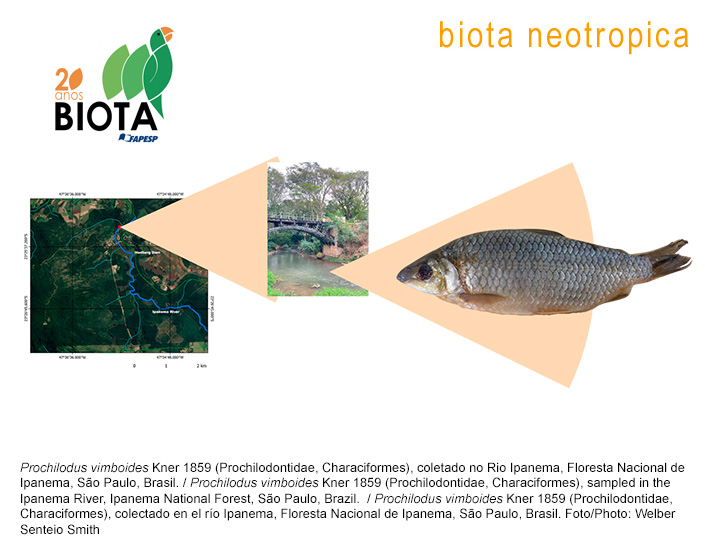Effects of aquatic macrophytes on phytoplankton in a shallow tropical reservoir (Amazon, Brazil)
Resumen
Abstract The study investigated the use of phytoplankton as an environmental assessment tool in a supply reservoir in the Brazilian Amazon, analyzing how macrophyte colonization influences ecological structure. Three scenarios were established with different levels of floating macrophyte cover: scenario 1 (~90% visibility of the water surface, in December/2013), scenario 2 (~50% of the water surface covered with macrophytes, in March/2014), scenario 3 (~80% of the water surface covered with macrophytes, in September/2014). Phytoplankton, chlorophyll-a and limnological data were collected at three points and three depths in the reservoir. Multivariate analyses revealed significant differences in physico-chemical and biological factors between the scenarios, influenced by seasonality and the colonization of macrophytes. In scenario 1, the reservoir was mesotrophic, deep and transparent, with high salinity and total dissolved solids, dominated by planktonic species. In scenario 2, eutrophication was present, with a higher concentration of ammoniacal nitrogen due to the rains, and the presence of planktonic and benthic species associated with the microhabitats formed by the macrophytes. In scenario 3, shallow and dominated by macrophytes, benthic and shade-adapted species were prevalent, reflecting high turbidity and the presence of high iron. The Species Indication Value approach proved effective (71.2%), highlighting the influence of turbidity, potassium, magnesium, salinity and precipitation on phytoplankton structure. The study recommends the continued use of phytoplankton as a bioindicator in future research, strengthening its role in the ecological assessment of Amazonian aquatic environments.Descargas
Publicado
01/01/2025
Cómo citar
Sousa, E. B. de, Gomes, A. L., Carneiro, B. S., Lima, M. de O., Ribeiro, F. C. P., & Câmara, V. de M. (2025). Effects of aquatic macrophytes on phytoplankton in a shallow tropical reservoir (Amazon, Brazil). Biota Neotropica, 25(2). Recuperado a partir de https://www.biotaneotropica.org.br/BN/article/view/2109
Número
Sección
Artículos
